Jugjock
Posts: 5
Joined: 11/24/2009
Status: offline

|
After spending lots of money on aviation history book and magazines, static and flying models, aviation war games (miniatures, board games and computer games), and flight simulations, it’s a challenge to sit down and compose a succinct response to, “How does the F4U-4 compare to the P-47D?”
Let me disclose some personal biases here. My dad was a Marine Corps aviation mechanic servicing F4U’s in VMF321 between WWII and Korea. He absolutely loved that airplane. My favorite college professor flew P-47D’s in a ground support role in France in 1944-45. He got shot down and lived to tell about it. My fascination with Thunderbolts started on Christmas day 1960 when I received a copy of Martin Caidin’s “Black Thursday,” if only the Jugs could have stayed with the Forts a bit longer…
First, please humor me while I wonder off topic a bit regarding P-47’s in the European theatre of operations:
The common opinion about the supremacy of the Mustang over the Thunderbolt (Jug) seems to be to be settled. This stems from a lot of veteran aviators comparing the two airplanes first hand. The Mustang was more maneuverable, had longer range, and was faster in climbing and level flight.
There were nonetheless, some areas where the Jug outperformed the Mustang:
1) Dive speed (the Jug was the biggest and heaviest of any fighter in WWII, I’ve never read about any other plane exceeding its dive rate. For that reason, it was selected to conduct compressibility/speed of sound tests by the Army, much to the detriment of some of the test pilots who weren’t able to regain control of their airplanes and pull out before crashing);
2) Roll rate (the Jug could surprise an opponent who misjudged its ability to roll and then pull back on the stick to turn – the greatest limiting factor was the pilot’s ability to withstand the G’s);
3) Survivability (with a much more rugged airframe and an air-cooled engine the Jug could take far more punishment than the Mustang. The Mustang’s radiator is exposed on the bottom of the airframe. Robert Johnson’s P-47 surviving an attack by an FW-190 that finally broke off after running out of ammo is the penultimate story for Jug’s toughness);
4) Armament and load capacity (8 fifties versus 6; and the Jug’s ability to lift a huge amount of weight compared to its size).
One last point regarding range – by the end of the war, P-47D’s (and P-38’s) were able to escort bombers all the way to Berlin, so the tactical range issue was greatly minimized.
Now back to the topic at hand…
Corsairs, like all naval fighters, were designed to withstand the rigors of rough carrier landings. The airframe could withstand copious amounts of battle damage. (If I remember correctly, the Japanese used 20mm’s to arm most of their fighters.)
The “bubble top” Jugs had better all-around visibility.
The Razorback Jugs had similar rear view blockage compared to the Corsair.
Both fighters were tail draggers and had long noses and needed ground personnel sitting on a wing to help the pilot when taxiing in tight traffic on narrow tarmacs where they were not able to weave back and forth to see where they were going.
Both fighters were classified as “boom and zoom” fighters, compared to “turn and burn” planes like the much lighter Spitfires, Messerschmitt’s, and Zeros.
I’m guessing that in the Pacific theatre, Corsairs were more likely than Jugs to enter into dogfights with Japanese fighters, but from recollection I think “boom and zoom” tactics were preferred, and recommended.
Regarding the ground support role, my bias is with the Juggernaut.
I don’t think it’s a stretch to assume that Wehrmacht antiaircraft capabilities were far superior to what the Japanese fielded in WWII. The German multi-20mm and -40mm gun platforms were deadly, and USAAF losses would have been significantly higher, if the Jug hadn’t been so tough.
The only comparison we can make to Jugs in WWII were the US Navy’s use of Corsairs for ground support in Korea.
In that role, I believe using F4U’s for ground support was more of a function of the call-up of naval reserve units and the lack of any other carrier-based first-line ground support fighters after the US post-WWII military draw down. And that there were no P-47D’s in regular or reserve USAF units (might have been a few hold-out state National Guard units at that time, but I doubt it); most (if not all) of the reserve USAF units called up by 1950 were flying Mustangs.
With regard to enemy ground fire survivability, I don’t think the North Koreans or the Chi-coms had mobile ground-based AA comparable to the strength and amount deployed by the Wehrmacht. So, I don’t think the F4U’s were generally subjected to the amount of mobile AA that the US Army Air Force had to deal with in Europe; I’m not saying that there weren’t local situations where the sh_t really hit the fan for the Navy fliers. I could be educated here…
Another reason for using the F4U’s for ground support in Korea was that the carrier-based and land based jets in the US Navy and Air Force arsenals were not able to carry a lot of extra weapons, and could not slow down enough to be effective against ground targets without becoming vulnerable to ground fire. You could shot off a couple of cylinders from the Corsair’s engine, and as long as the oil held out, it would still fly; same for the Jug; let one bullet bounce around in the turbine of a jet engine, and things start to self-destruct quickly.
Also, jets don’t glide very well. F4U’s and Jug’s don’t glide real well either. But I’m thinking the latter two would go a lot farther with no power than would a Saber Jet. Of course, if you’re shot to bits at several hundred feet above the ground, gliding isn’t really much of an issue…
I could spend a lot more time writing on this subject, but I’ve already exceed a “ten” on the boredom meter so, I’ll close with two additional issues/questions:
1) It’s a mystery to me that Corsairs were not used in the Atlantic or in Europe. Granted that the USS Ranger was small for a fleet carrier, and that “jeep carriers” of converted merchantmen were used to carry old Wildcats/Martins, Hurricanes, or Swordfish, for convoy duty, and those runways were not long enough for F4Us of any variant. Nevertheless, in all of my readings I’ve yet to come across a good explanation for why that was so. Any thoughts or information on that would be very much appreciated.
2) I have no online flight simulators experience with fighters. I’d like to hear from those of you who flew Corsairs against other Axis or Allied fighters in online forums.
3) I have no experience with WitP/AE and how it models Corsairs and Jugs. Your thoughts…?
Best regards,
Chris
< Message edited by Jugjock -- 9/22/2014 3:43:50 AM >
|
 Printable Version
Printable Version
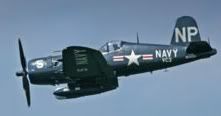





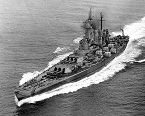

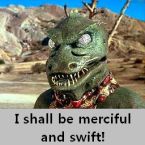

 Nice post!
Nice post!
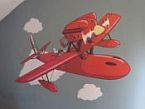
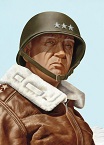
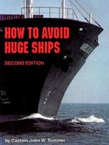
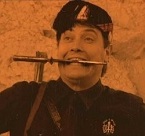



 New Messages
New Messages No New Messages
No New Messages Hot Topic w/ New Messages
Hot Topic w/ New Messages Hot Topic w/o New Messages
Hot Topic w/o New Messages Locked w/ New Messages
Locked w/ New Messages Locked w/o New Messages
Locked w/o New Messages Post New Thread
Post New Thread